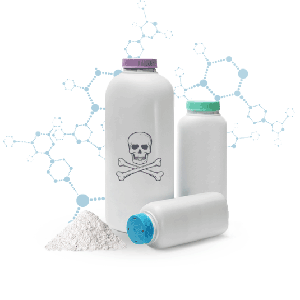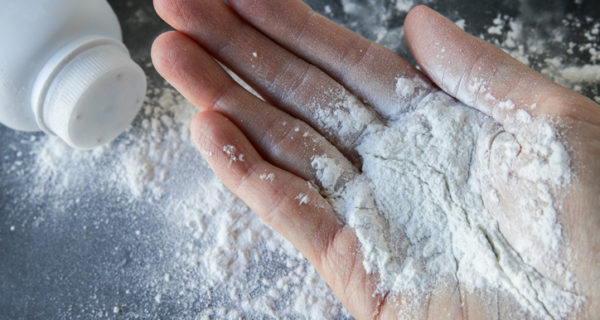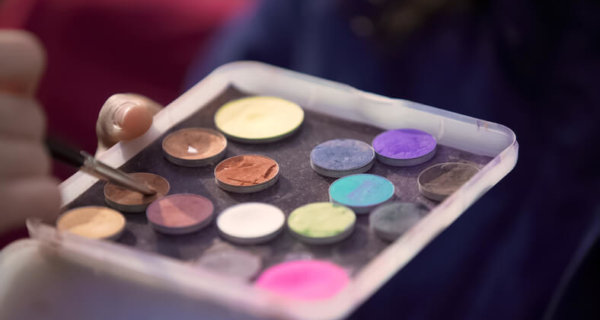Talcum Powder Lawsuit Overview
 Johnson & Johnson’s iconic Johnson’s baby powder® as well as Shower to Shower® products both include the mineral talc, which is a silicate. However, talcum powder is linked to ovarian cancer in women using talc-based products for feminine hygiene. As a result, injured patients may qualify for compensation through a talcum powder lawsuit.
Johnson & Johnson’s iconic Johnson’s baby powder® as well as Shower to Shower® products both include the mineral talc, which is a silicate. However, talcum powder is linked to ovarian cancer in women using talc-based products for feminine hygiene. As a result, injured patients may qualify for compensation through a talcum powder lawsuit.
Johnson & Johnson, the world’s largest manufacturer and distributor of talcum powders, sold talc-based products for over 100 years. In the last year, J&J recalled 33,000 bottles after FDA testing discovered asbestos fibers inside. Then in May 2020, the company decided to halt all talcum powder sales in the United States going forward.
The Link Between Talcum Powder and Ovarian Cancer
Talcum powder is one of the most common hygiene products on the market today. Due to its supposed ability to absorb moisture as well as reduce rashes, talc’s popularity among consumers remains strong. Talcum powder contains talc, a seemingly non-complex combination of magnesium, silicon and oxygen. However, talc is also a silicate, which many doctors agree can cause inflammation in the body.
Since the 1970s, researchers speculated about the potential link between talcum powder and the risk of developing ovarian cancer. Because studies show an association between the two, recent allegations have surfaced in talcum powder lawsuits. Plaintiffs now claim the company knew about the link between talc and increased risk of cancer. However, J&J failed to properly warn consumers about potential dangers from using talcum powder products in the genital region.
Researchers Cite Dangers of Prolonged Genital Talc Use
Surprisingly, a study conducted in 1971 discovered that talc was in an overwhelming 75% of ovarian tumors. Then in 1973, the Federal Drug Administration required all talcum powders to be asbestos-free by law. Nearly 20 years later, a 1992 study found that women who applied talcum powder in the genital region had an elevated risk of developing epithelial ovarian cancer. Further, researchers published a 2003 case-control study stating that talcum powder increased women’s risk of ovarian cancer by 33% when regularly applied near the genitals.
Due to Johnson & Johnson’s failure to warn consumers about the link between cancer and talcum powder shown over decades of published medical research, many people were unknowingly exposed to serious, life-threatening danger.
Talcum Powder Lawsuit Information
Deane Berg won the first talcum powder lawsuit in federal court against Johnson & Johnson in 2013. Because of this benchmark lawsuit, thousands of women diagnosed with ovarian cancer after using talcum powder have hope for justice. Since then, several juries awarded multimillion-dollar settlements to talcum powder cancer victims.
Due to talcum powder’s popularity, over 10,000 talcum powder lawsuit claims are still pending against Johnson & Johnson.
J&J Talcum Powder Lawsuit Payouts Total More Than $5 Billion To Date
So far, juries ordered J&J to pay five mesothelioma plaintiffs multimillion-dollar talcum powder lawsuit settlements. In April 2018, a jury awarded Stephen Lanzo II and his wife $117 million in damages for mesothelioma. Then in May, a jury found J&J liable for Joanne Anderson’s mesothelioma diagnosis and awarded her $26 million.
The biggest talcum powder lawsuit settlement to date is $2.12 billion in July 2018 to 22 ovarian cancer plaintiffs. While J&J vowed to appeal this record-breaking payout, a judge upheld the verdict in June 2020.
In 2019 alone, three mesothelioma cases netted multimillion-dollar payouts for plaintiffs, including:
- Terry Leavitt, $29.4 million in March 2019
- Donna Olson, $325 million in May 2019
- Patricia Schmitz, $10 million in June 2019
Check your eligibility for compensation.
If you or a loved one has suffered from ovarian cancer after talcum powder use, you may be entitled to compensation from the manufacturer. Request your free case evaluation now to see if you may qualify.




